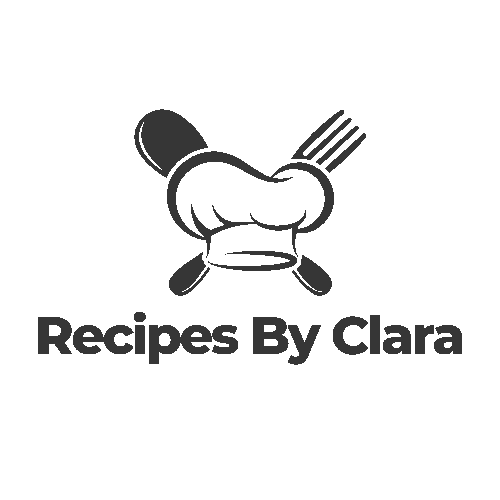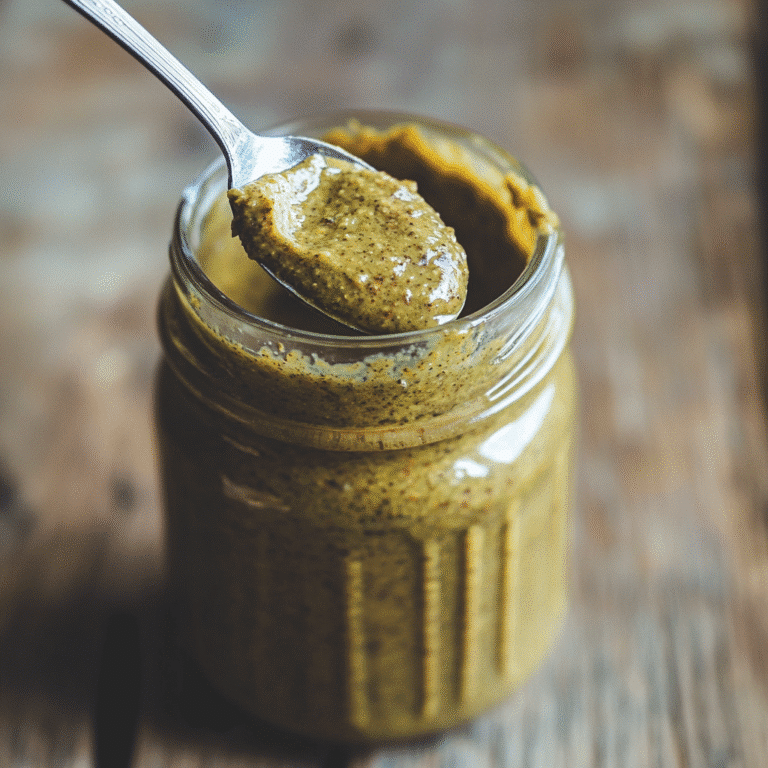If you’re passionate about clean, flavorful ingredients and creative spins on traditional favorites—just like we are here at Recipe by Clara—then you’re going to love this deep dive into pistachio nut butter. This smooth, rich spread has exploded in popularity among food lovers, health seekers, and flavor explorers. In this guide, we’ll explore everything from its health benefits to how it stacks up against peanut butter, and why it’s worth every penny.
Thank you for reading this post, don't forget to subscribe!Whether you’re new to the world of nut butters or a seasoned spread enthusiast, you’ll find tasty ideas, comparisons, and inspiration for every occasion. Check out how we use it in our unique pistachio nut butter recipes like this one: Discover great ideas like Pistachio Butter here
Table of Contents
What is Pistachio Nut Butter?
Origin and Evolution of Pistachio Nut Butter
Pistachio nut butter is a smooth, creamy spread made from finely ground roasted pistachios. What started as a niche delicacy in Mediterranean and Middle Eastern cuisine is now gaining momentum globally for its rich flavor, nutritional power, and versatility. While almonds and peanuts have long dominated the nut butter aisle, pistachios are carving out their space thanks to their naturally sweet, earthy taste and vivid green color.
Historically, pistachios were prized by royalty and ancient civilizations like the Persians and Romans. Over time, their use expanded beyond snacking into oils, pastes, and, eventually, the modern pistachio butter we love today.
In places like California, Iran, and Turkey—where pistachios are harvested in abundance—producers have begun crafting high-end pistachio butters to meet the growing demand for healthier, gourmet alternatives to traditional spreads.
How Pistachio Butter is Made (Traditional vs. Commercial)
Making pistachio nut butter can be as simple or sophisticated as you’d like. Traditionally, it involves dry-roasting shelled pistachios and grinding them until they release their oils, transforming into a smooth paste. No extra oils or sugar are needed when the pistachios are fresh and of high quality.
Artisanal small-batch pistachio butter usually sticks to this minimal approach—just nuts and maybe a pinch of salt. In contrast, some commercial brands may add canola oil, sweeteners, or stabilizers to improve shelf life or texture, but that can compromise the nutritional value.
Here’s a quick breakdown comparing traditional vs. commercial methods:
| Feature | Traditional Pistachio Butter | Commercial Pistachio Butter |
|---|---|---|
| Ingredients | 100% roasted pistachios (sometimes salt) | Pistachios + oils, sweeteners, stabilizers |
| Flavor | Rich, natural, nutty | Slightly diluted, often sweeter |
| Texture | Dense and creamy | Creamier, sometimes oily |
| Shelf Life | Shorter (3–6 months) | Longer (6–12 months) |
If you’re trying to eat clean and avoid additives, making your own pistachio nut butter at home or buying from local producers is your best bet. Discover great ideas like our naturally crafted Pistachio Butter recipe to try it yourself.
What Makes It Unique Among Nut Butters
Pistachio nut butter stands out for a few key reasons:
- Flavor: It has a mildly sweet, buttery taste with a slightly earthy undertone—much subtler than almond or cashew butter.
- Color: That naturally vibrant green hue is not just beautiful but also a sign of its antioxidant content, specifically lutein and zeaxanthin, which are great for eye health.
- Texture: It’s creamy yet rich, making it perfect for everything from toast to dessert toppings.
- Nutritional Powerhouse: With heart-healthy fats, fiber, protein, and antioxidants, it’s one of the most balanced nut butters you can buy.
Want a delicious twist on dessert spreads? Don’t miss our creative pairing in this Strawberry Chocolate Dubai recipe—a sweet treat made richer with a swirl of pistachio butter.
Print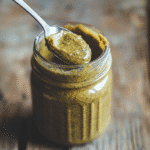
Pistachio Nut Butter: A Gourmet Spread with Real Benefits
- Total Time: 5 minutes
- Yield: 1 cup
- Diet: Vegan
Description
A gourmet, heart-healthy spread made from roasted pistachios, perfect for sweet or savory recipes.
Ingredients
- 2 cups roasted shelled pistachios
- Pinch of sea salt (optional)
Instructions
- Add roasted pistachios to a high-powered food processor.
- Blend for 3-5 minutes, scraping down sides as needed.
- Continue blending until smooth and creamy.
- Optional: Add a pinch of sea salt and blend again.
- Transfer to a jar and store in the refrigerator.
Notes
Use high-quality roasted pistachios for best flavor. Store upside down in the fridge to minimize oil separation.
- Prep Time: 5 minutes
- Cook Time: 0 minutes
- Category: Spread
- Method: Food Processor
- Cuisine: Mediterranean
Health Benefits of Pistachio Nut Butter
Nutritional Profile: Fats, Protein, Vitamins & Minerals
Let’s break it down—pistachio nut butter isn’t just delicious, it’s deeply nutritious. It packs a powerful combination of macronutrients and micronutrients your body actually craves.
Here’s a quick nutritional snapshot for 2 tablespoons (32g) of natural pistachio butter:
| Nutrient | Amount |
|---|---|
| Calories | 180–200 |
| Protein | 6g |
| Total Fat | 16g (mostly monounsaturated) |
| Carbohydrates | 8g |
| Fiber | 3g |
| Vitamin B6 | 25% DV |
| Potassium | 280mg |
| Magnesium | 15% DV |
| Iron | 6% DV |
One of pistachio nut butter’s greatest strengths is its fat profile. Most of its fats are monounsaturated and polyunsaturated fats, the heart-friendly kind that can help reduce LDL cholesterol. It’s also loaded with plant-based protein and fiber, keeping you full longer—ideal for healthy snacking.
And the vitamin B6 content? It’s off the charts compared to most nuts, supporting mood regulation, red blood cell production, and nervous system function.
Don’t miss our nutritious drizzle idea in this Banana Coffee Syrup pairing—a breakfast boost with flair.
Heart Health, Weight Loss & Anti-inflammatory Benefits
Here’s why pistachio nut butter deserves a spot in your pantry beyond taste:
1. Cardiovascular Health
Thanks to its high content of monounsaturated fats, phytosterols, and antioxidants (like lutein), pistachio butter supports healthy blood vessels and cholesterol levels. Regular consumption may help lower bad LDL cholesterol and raise good HDL cholesterol.
2. Weight Management
You’d think that because it’s calorie-dense, pistachio butter would be off-limits for weight watchers. Nope. Studies show that pistachios may actually support weight control because they increase satiety. The fiber-protein-fat combo in the butter slows digestion and reduces hunger between meals.
3. Anti-Inflammatory Properties
Pistachio butter contains polyphenols and carotenoids, compounds known to reduce inflammation markers in the body. It’s also a good source of magnesium, which helps regulate blood sugar and inflammation.
Looking to keep things gut-friendly and anti-inflammatory? Check out our Glow Tea pairing to sip and spread with synergy.
Is Pistachio Nut Butter Healthy for Kids?
Absolutely! As long as there are no nut allergies, pistachio nut butter is a smart choice for kids. It’s nutrient-dense and naturally sweet, making it great for:
- Spreading on whole-grain toast
- Swirling into oatmeal or yogurt
- Dipping with fruit slices
However, always read the label or make your own to avoid added sugars, palm oils, or preservatives.
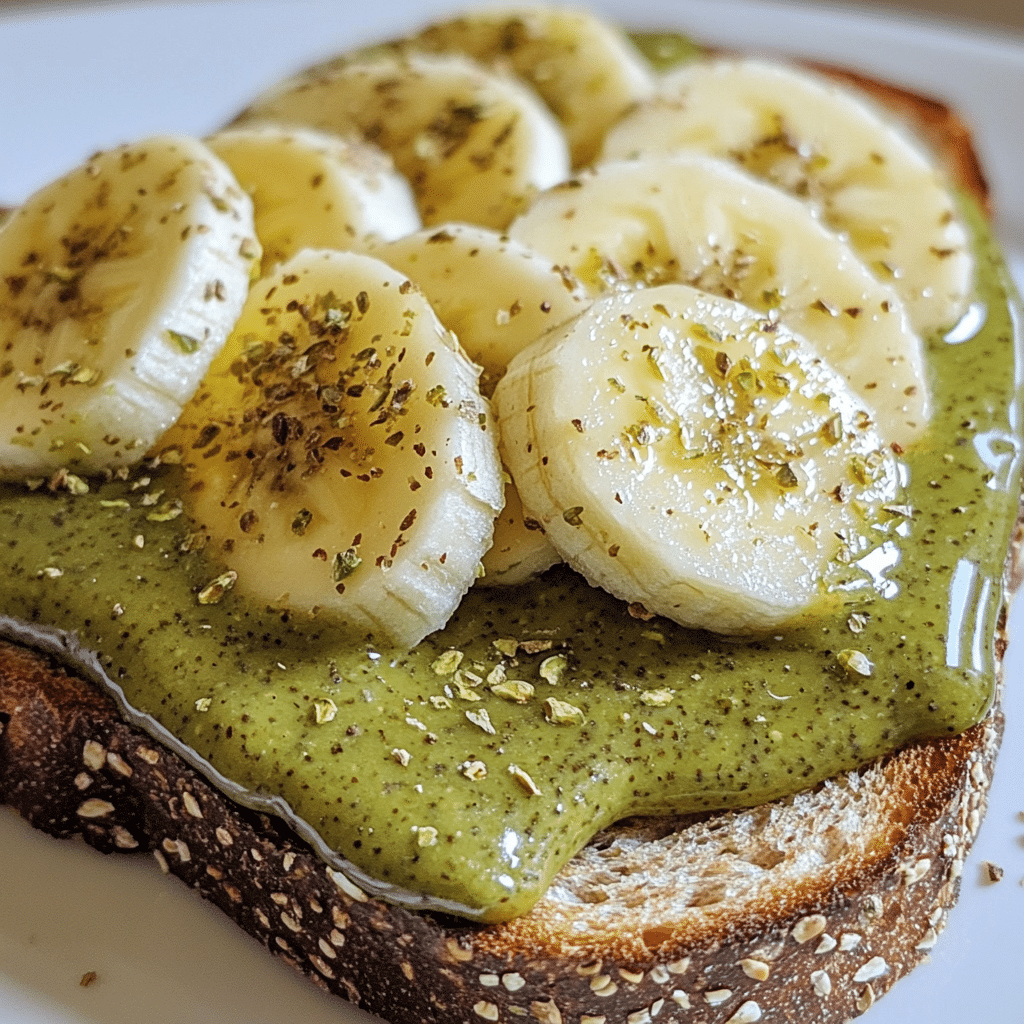
Pistachio nut butter is especially ideal for picky eaters who resist vegetables—it’s colorful, fun, and naturally tasty. Looking for inspiration? Try it on Tortilla Cinnamon Rolls for a snack they’ll actually beg for.
Pistachio Butter vs Peanut Butter
Taste & Texture Comparison
Let’s be real—pistachio nut butter and peanut butter are two very different experiences. While peanut butter is an American pantry staple known for its salty-sweet punch and thick stick-to-the-roof-of-your-mouth texture, pistachio butter comes in smooth with a subtle, naturally sweet and earthy flavor that feels gourmet.
Here’s a quick flavor profile comparison:
| Feature | Pistachio Butter | Peanut Butter |
|---|---|---|
| Flavor | Mildly sweet, buttery, nutty | Strong, roasted, slightly salty |
| Texture | Smooth, creamy, sometimes silky | Thick, dense, slightly gritty |
| Color | Green to golden green | Tan or brown |
Pistachio nut butter’s elegance makes it more adaptable in both sweet and savory dishes. You can slather it on toast or sneak it into sauces and dressings without overpowering the dish.
Nutritional Differences and Health Impact
Now let’s dig into the nutrition comparison—where things really get interesting.
| Nutrient (per 2 tbsp) | Pistachio Butter | Peanut Butter |
|---|---|---|
| Calories | ~190–200 | ~190 |
| Protein | 6g | 8g |
| Fat | 16g (mostly unsaturated) | 16g (mixed fats) |
| Fiber | 3g | 2g |
| Magnesium | 15% DV | 12% DV |
| Vitamin B6 | 25% DV | 5% DV |
| Sugar (unsweetened) | 1g | 1–2g |
Pistachio nut butter has slightly less protein but wins in micronutrients, especially vitamin B6, potassium, and antioxidants like lutein and zeaxanthin. It’s also a touch lower in saturated fat, making it a better pick for heart health.
On the flip side, peanut butter tends to have more added sugars and oils in conventional brands, which is something health-conscious consumers are trying to avoid.
Winner for heart and eye health: Pistachio butter
Winner for protein seekers on a budget: Peanut butter
Looking for a creative way to blend the best of both? Don’t miss our delicious Cloud Bread Breakfast Sandwich, where pistachio and peanut butter can both play their part in one dreamy bite.
Allergy Considerations and Digestibility
Here’s a lesser-known fact: peanut allergies are more common than pistachio or tree nut allergies. That makes pistachio butter a safer choice in many households, though you should always check for specific tree nut sensitivities.
In terms of digestion, pistachio butter is easier on the stomach for many due to its monounsaturated fat profile and slightly lower fiber count. Plus, it’s less likely to cause bloating or discomfort, especially when eaten in moderation.
If you’re following a low FODMAP, Mediterranean, or anti-inflammatory diet, pistachio nut butter is a smart, flavorful option to keep in rotation.
Why Is Pistachio Butter So Expensive?
The Real Cost of Pistachios per Pound
You’ve probably noticed the price tag on pistachio nut butter is nothing like your average jar of peanut butter. That’s because pistachios themselves are expensive—even before they’re ground into a creamy spread.
Here’s why:
- Labor-intensive harvesting: Pistachios need to be picked at the perfect moment of ripeness. Mechanical harvesting is possible, but it still requires precision and maintenance.
- Water consumption: Pistachio trees, especially in regions like California, demand a lot of water—up to 50 gallons per tree per day during peak season.
- Long maturity time: A pistachio tree takes 4 to 7 years to begin producing, and full production can take over a decade.
- Limited growing zones: Pistachios thrive in dry, hot climates. Only a few places in the world grow them commercially—California, Iran, Turkey, and a few Mediterranean regions.
On average, raw shelled pistachios can cost $15–$25 per pound depending on quality and origin. Compare that to peanuts, which can sell for under $2 per pound wholesale. That’s a massive jump before you even make the butter.

Small-Batch, Artisanal vs. Mass-Produced Pricing
Now take that premium raw nut and add the small-batch, slow-crafted process that many pistachio butter brands pride themselves on. No fillers, no added oils, no sugar—just fresh roasted pistachios, maybe a hint of sea salt.
Artisanal pistachio butter is typically:
- Produced in small quantities
- Stone-ground or low-heat blended to preserve nutrients
- Packaged in eco-conscious materials
That level of craftsmanship doesn’t come cheap—but it does come with flavor, nutrition, and sustainability.
On the other hand, mass-produced pistachio butter often adds canola oil, sugar, or preservatives, and while it lowers the cost, it also lowers the quality.
| Type | Cost (per 8 oz jar) | Ingredients | Shelf Life |
|---|---|---|---|
| Small-Batch Artisanal | $12–$20 | 100% pistachios | 3–6 months |
| Commercial Brand | $6–$10 | Pistachios, oils, sugars | 6–12 months |
Is It Worth the Price? What Experts Say
Nutritionists and foodies alike argue that pistachio nut butter is worth the splurge—especially when:
- You’re avoiding added sugars/oils.
- You want more nutrient diversity in your diet.
- You appreciate gourmet, unprocessed flavor.
Plus, with pistachio butter, a little goes a long way. Its richness means you don’t need to overdo it.
Check out our Mexican Elote Recipe where a spoonful of pistachio butter adds a creamy, nutty twist you never saw coming.
How to Use Pistachio Butter in Your Kitchen
Best Foods to Pair With Pistachio Nut Butter
One of the reasons pistachio nut butter is a rising favorite in food circles is its versatility. Whether you’re into clean eating or flavor-forward recipes, there are endless ways to enjoy it.
Here are some of the best foods to pair it with:
- Toast & Bagels: Swap out the peanut butter for pistachio butter on whole-grain toast or a toasted bagel. Add sliced strawberries or bananas for a naturally sweet upgrade.
- Oatmeal & Overnight Oats: Swirl a spoonful into your hot oatmeal or jar of overnight oats for nutty richness and a color pop.
- Fruit Dips: Use it as a dip for apple slices, pears, or even figs—perfect for snack time or a healthy dessert platter.
- Crackers or Rice Cakes: Spread it over your favorite gluten-free cracker or a crunchy rice cake. Add a pinch of flaky salt or honey drizzle to elevate it.
- Smoothies & Bowls: Add it to green smoothies, smoothie bowls, or protein shakes for creamy texture and extra healthy fats.
Want to take it next-level? Try pairing it with our Strawberry Chocolate Dubai for an indulgent twist.
Creative Ways to Use It (Sweet & Savory)
Pistachio butter isn’t just a sweet treat—it plays beautifully in savory dishes too.
Sweet Ideas:
- Pistachio Butter Frosting: Blend with powdered sugar and coconut cream for a naturally green cupcake topping.
- Nut Butter Cups: Use it as a filling for homemade chocolate cups.
- Pistachio Butter Banana Toast: Add a sprinkle of chia seeds and cinnamon—delish!
Savory Ideas:
- Salad Dressings: Thin it with lemon juice, garlic, olive oil, and water for a nutty vinaigrette.
- Grain Bowls: Drizzle over quinoa or farro bowls with roasted veggies.
- Sauces for Meat or Tofu: Use as a creamy base for chicken satay or tofu marinade.
Recipes You Can Try Today
Your readers crave Clara-style kitchen creativity. Here are some delicious ideas you can whip up with pistachio nut butter:
| Recipe Idea | Description |
|---|---|
| Pistachio Butter & Honey Toast | Simple, satisfying, and sweet—perfect for busy mornings. |
| Pistachio Butter Smoothie Bowl | Blend with banana, spinach, almond milk, and top with granola. |
| Pistachio Butter Chicken Skewers | Use it in a yogurt-based marinade with lemon and cumin. |
| Pistachio Glaze for Pastries | Combine with maple syrup and vanilla for a glossy finish. |
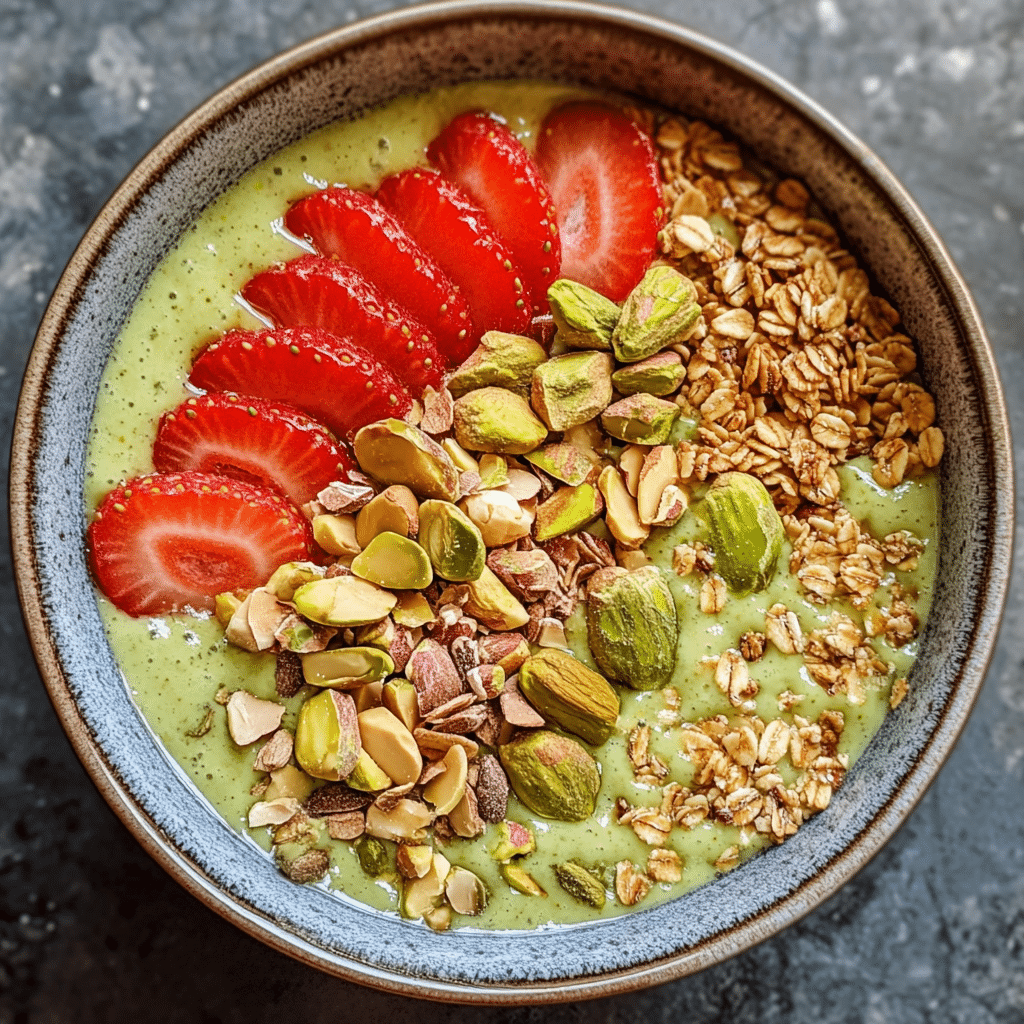
Storage, Shelf Life & Buying Guide
How to Store Pistachio Nut Butter Properly
Proper storage can make a huge difference in preserving the flavor, texture, and nutritional value of your pistachio nut butter. Unlike commercial peanut butters that contain stabilizers, natural pistachio butter is more delicate.
Here’s how to store it right:
- Before opening: Keep it in a cool, dark place, like your pantry. Avoid exposure to sunlight or heat, which can speed up oxidation.
- After opening: Transfer to the refrigerator. This helps maintain freshness and prevents the natural oils from going rancid.
- Always stir before use: The oil separation is natural. Just give it a quick stir to reincorporate.
Tip: Store the jar upside down in the fridge once stirred. This helps prevent the oil from pooling at the top again.
| Storage Method | Shelf Life |
|---|---|
| Pantry (unopened) | 3–4 months |
| Fridge (after opening) | 5–6 months |
| Freezer (airtight container) | Up to 12 months |
Signs It’s Gone Bad & What to Avoid
Like all natural foods, pistachio nut butter won’t last forever. Here are some red flags to look for:
- Strong sour smell or rancid odor
- Visible mold or discoloration
- Separation that doesn’t stir back together
- Bitter or metallic taste
If your pistachio butter shows any of these signs, it’s best to toss it.
Avoid:
- Butters with added palm oil or artificial flavors.
- Overly processed brands with long ingredient lists.
How to Choose the Best Jar in Stores or Online
When shopping for pistachio butter, the ingredient list should be short and sweet—literally.
Look for:
- “100% pistachios” as the only ingredient (or maybe a pinch of sea salt)
- Glass jars for freshness and eco-consciousness
- Cold-pressed or stone-ground methods (they retain nutrients and flavor)
- Small-batch or organic options when possible
Pro Tip: Compare price per ounce—sometimes a larger jar costs less in the long run.
Don’t forget to taste-test a few brands until you find your favorite. Better yet, try making your own pistachio butter at home using high-quality roasted pistachios and a strong food processor.
Looking for inspiration? Try slathering some on our easy Tortilla Cinnamon Rolls for a creamy, nutty twist.
FAQs: Frequently Asked Questions
Is pistachio nut butter healthy?
Yes, it’s packed with heart-healthy fats, protein, antioxidants, and fiber. It’s especially good when made without added sugars or oils.
Is pistachio butter better than peanut butter?
It depends on your goals. Pistachio butter has more monounsaturated fats and a unique taste, while peanut butter has more protein and is generally cheaper.
Why is pistachio butter so expensive?
Pistachios are labor-intensive to harvest and costly to grow, plus most pistachio butter is made in small, artisanal batches.
What do you put pistachio butter on?
Try it on toast, oatmeal, pancakes, in smoothies, on ice cream, or in salad dressings. It even works in savory sauces.
Follow us on Facebook for fresh new recipes, cooking tips, and food inspiration every week!
